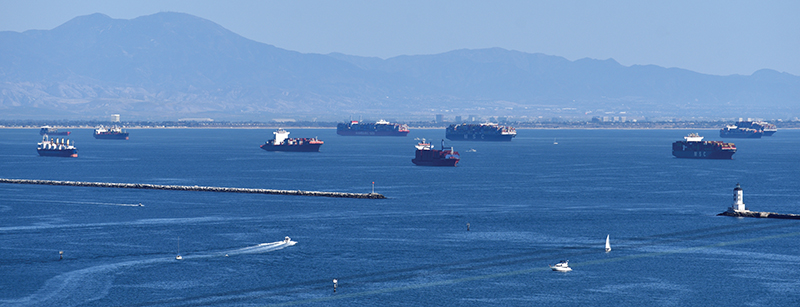
We’re in the middle of a global supply chain crisis. A shortage of supplies and workers, especially truck drivers, has combined with a post-pandemic surge in demand to create bottlenecks. Add to that the impact of COVID-19 mitigation strategies (some of which are still in force) on goods movement, particularly across national borders.
According to the Texas Department of Transportation (TxDOT), some 3.3 billion tons of freight representing $3 trillion were transported in Texas in 2021. Moving those goods generated approximately 40 billion crowd-sourced data points along the way. What, where, when, how and how much are questions with answers found somewhere in the “data log” of every product moving along the global supply chain. This ocean of information — called Big Data — can help us better understand what happens to those products between points A and B and show us how those trips can be made more reliable and efficient.

Port of Los Angeles and Long Beach.
Ever start your car in the morning and your smartphone shows you how long it’ll take to get to work? An algorithm somewhere is analyzing current traffic patterns and calculating your commute. That’s Big Data at work. Applying that same kind of proactive analysis to freight — looking at how efficiently goods are moving in a region — is called freight fluidity.
While TTI didn’t coin the term, we’ve done quite a bit of frontline work with the concept. In 2021, we produced a guidebook for TxDOT on how to implement the concept in Texas (see the related article). We’ve also worked with other states, Transport Canada, the Federal Highway Administration and the U.S. Army Corps of Engineers to apply it. Now, I’d argue, it’s time to implement freight fluidity on a global scale.
Leveraging Big Data through freight fluidity can boost efficiency, reduce shipping costs, improve trip reliability and lower consumer prices. But its value is about more than economics. Extreme weather events occur more frequently these days, and times of crisis are when we most rely on the supply chain to distribute vital materials like water, food and medicine. Doing so requires a resilient transportation system — the reliability of which doesn’t stop at the border — and there’s currently no international effort to improve cross-border freight fluidity. We need that meeting of the minds to help ensure supply chains are as efficient, reliable and responsive as possible as demonstrated by our present supply-chain crisis. Progress begins by asking the simplest of questions, like “How can we do this better?” TTI, as always, stands ready to assist in finding the answers.
